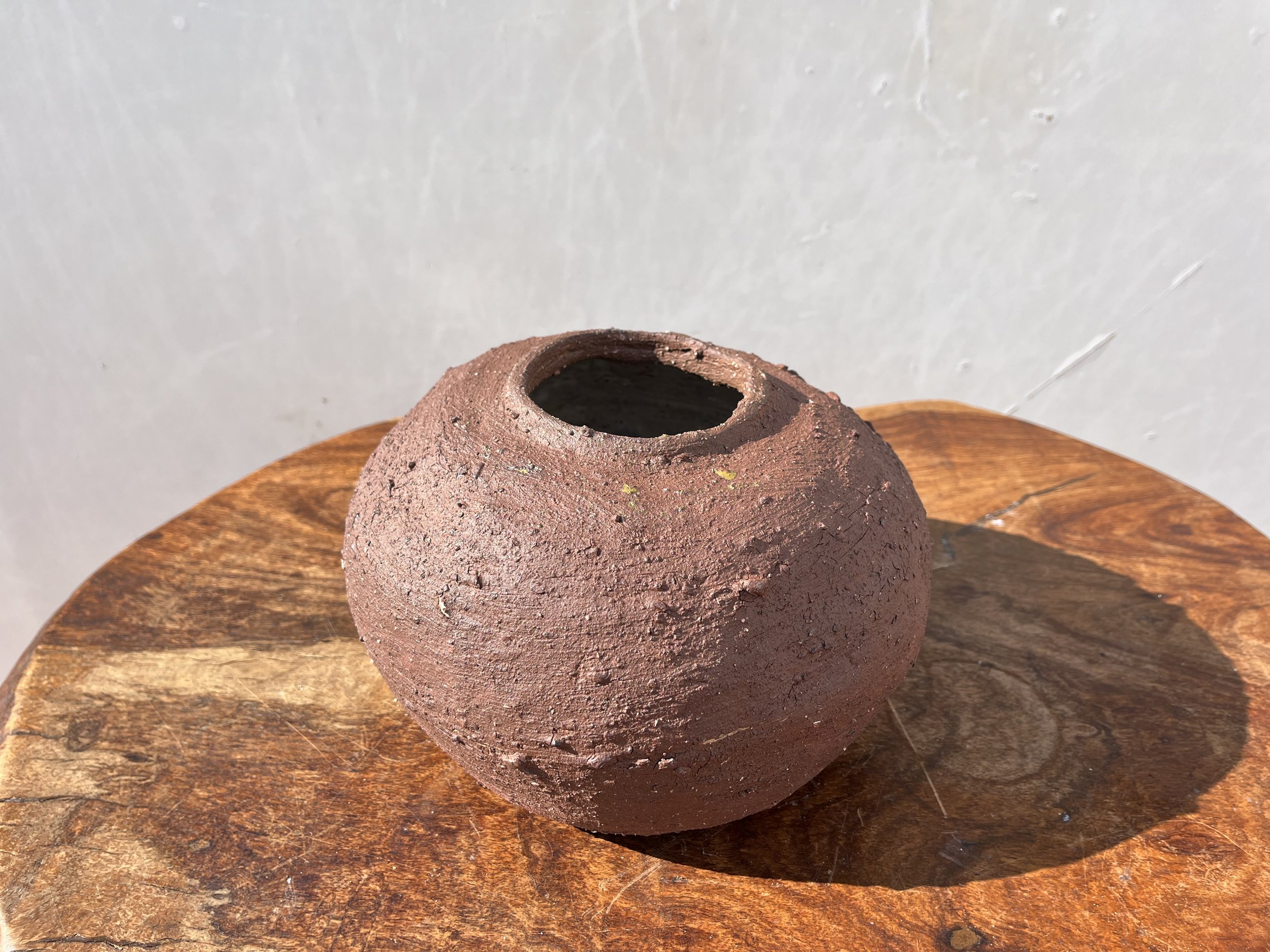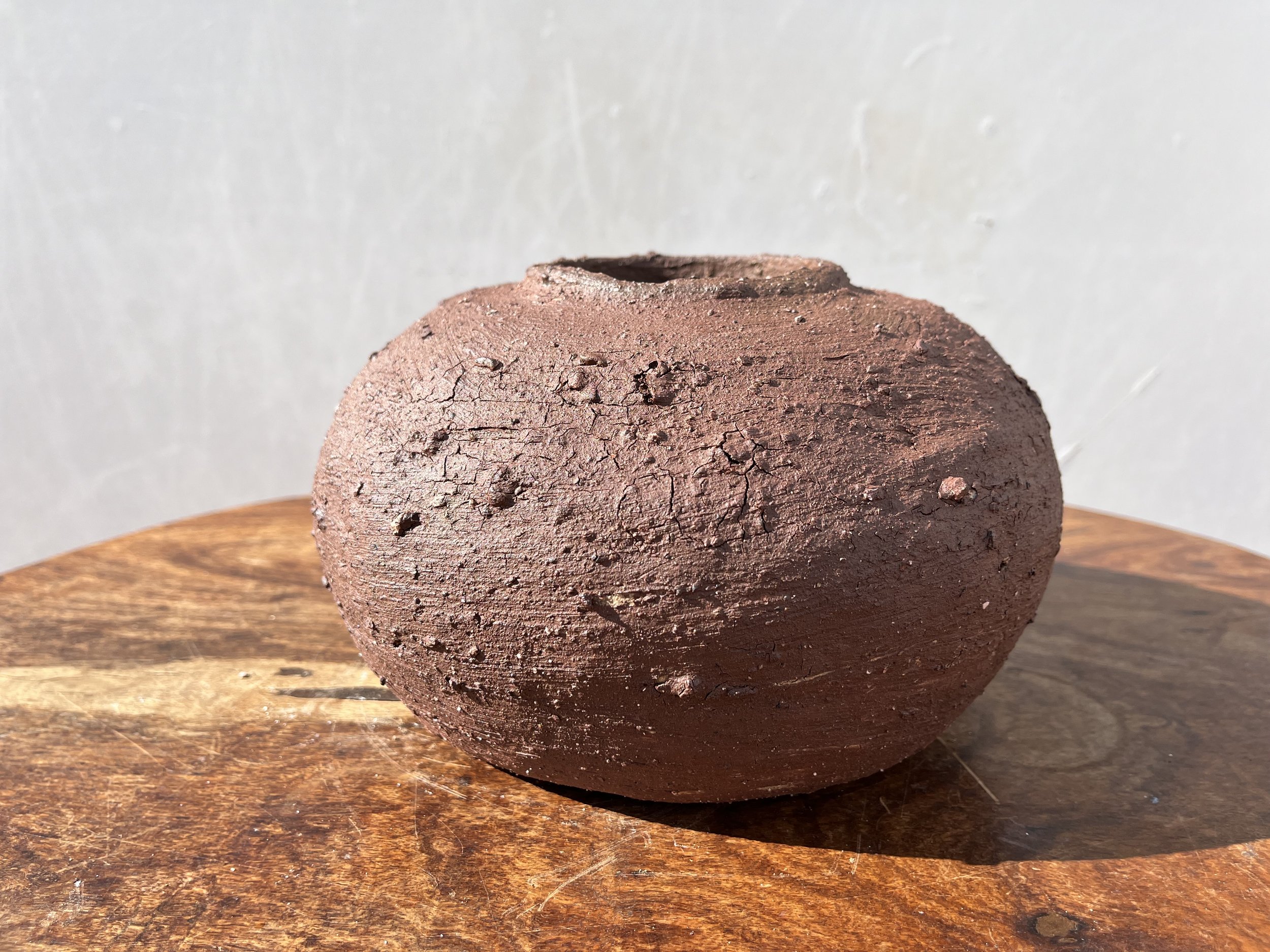The Flavia vessel
The Flavia vessel is made with a mixture of commercial and wild recyled clay scraps and painted with a clay harvested in a forest in Slovenia.
The textural qualities are inspired by ancient vessels and the degradation process they go through during millennia. Much of the pottery we have today in our museums was found underground and in tombs, often in shards, with cracks and heavily layered, through both the original decoration and firing process, but also the compaction of various soils in time. The vessels in the decay collection try to recreate this process with heavy layering of clays, rocks, sands and ochres.
This vessel has been fired to 1250 C and is NOT watertight.
This vessel is part of the Decay collection.
The Flavia vessel is made with a mixture of commercial and wild recyled clay scraps and painted with a clay harvested in a forest in Slovenia.
The textural qualities are inspired by ancient vessels and the degradation process they go through during millennia. Much of the pottery we have today in our museums was found underground and in tombs, often in shards, with cracks and heavily layered, through both the original decoration and firing process, but also the compaction of various soils in time. The vessels in the decay collection try to recreate this process with heavy layering of clays, rocks, sands and ochres.
This vessel has been fired to 1250 C and is NOT watertight.
This vessel is part of the Decay collection.
The Flavia vessel is made with a mixture of commercial and wild recyled clay scraps and painted with a clay harvested in a forest in Slovenia.
The textural qualities are inspired by ancient vessels and the degradation process they go through during millennia. Much of the pottery we have today in our museums was found underground and in tombs, often in shards, with cracks and heavily layered, through both the original decoration and firing process, but also the compaction of various soils in time. The vessels in the decay collection try to recreate this process with heavy layering of clays, rocks, sands and ochres.
This vessel has been fired to 1250 C and is NOT watertight.
This vessel is part of the Decay collection.

